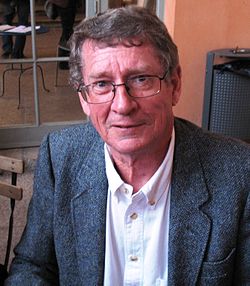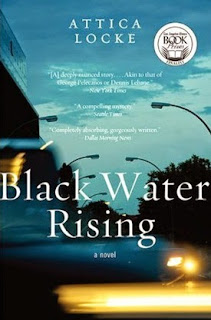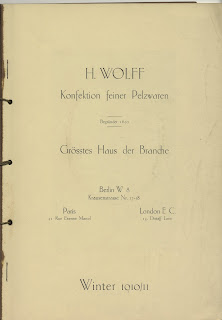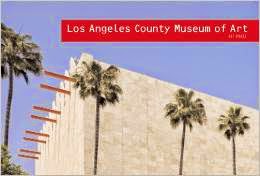Q: Why did you decide to write this book about the Los
Angeles art scene in the 1960s?
A: This is a book I had thought about writing for a very
long time. I first encountered art in Los Angeles when I moved to the city as a
14-year-old in the late ‘60s. I attended shows at the now defunct Pasadena Art
Museum, which was then the area’s modern art museum. I later met artists who
had been part of the ‘60s scene in L.A.
In the ‘70s, I also met Walter Hopps, who had been the prime
mover of the events I write about. I was also fascinated by Hopps, as were most
people who met him, I think; he had already assumed legendary status in some
circles.
I was extremely taken with much of the L.A. art I had
seen—with the assemblages of Wallace Berman and Ed Kienholz; the paintings of
Ed Ruscha and Joe Goode; the mirrored glass boxes of Larry Bell and the
floating discs of Robert Irwin—and I was struck by the fact that none of it
seemed to find its way into any of the books I was reading when I got to
college and grad school or into any of the museums I visited in New York.
I wrote some magazine articles on the subject in the 1980s,
and in the early 1990s I received a sabbatical from my job as managing editor
at the J. Paul Getty Trust.
Both of those early efforts were extremely useful to me
later; I interviewed key figures and dug around in archives, turning up a few
buried treasures. Some of the material I wrote during those years survives in
the present book, although much of it has been reworked. In the late 2000s, I
decided to focus on the book full-time.
Q: How did New York and Los Angeles compare in terms of
their cultural offerings during the period leading up to the 1960s?
A: It was night and day. New York had been the cultural
capital of the U.S. since the turn of the 20th century, and artists from other
parts of the country gravitated to the city. (Indeed, it’s worth noting that
some of the key figures of the so-called New York School had actually grown up
in California: Jackson Pollock, Philip Guston, and Robert Motherwell, who
coined the term “New York School,” were only the most famous.)
The arrival of important European artists during World War
II made New York the global capital of 20th-century art, a role that had
previously been played by Paris. It was home to an unparalleled array of major
art museums.
And it was the center of American publishing: the most
important writing about art was coming out of the dozens of periodicals that
were published in New York in the mid-20th century.
Los Angeles, by contrast, had virtually nothing. It was the
only American city of its size without an art museum. The Los Angeles County
Museum officially had an art division, but until the ‘40s it had been very much
treated as an afterthought. The galleries were left empty for many years; it
went without a curator for a full decade.
Exhibitions were mainly the responsibility of outside
clubs—the society of watercolorists, for example, or of photographers. The new
county art museum wouldn’t open its doors until 1965.
Nor did the city have any important galleries. In the
immediate aftermath of the war, there were two galleries of note that offered
modern art. One or two others emerged by the late ‘40s and early ‘50s. They
were decent galleries, but still not very adventuresome. They didn’t dare get
ahead of their clientele.
There wasn’t much in the way of criticism either. A dutiful
weekly column in the Los Angeles Times was about it.
All in all, L.A. was very much a cultural backwater until
the ‘50s. That’s when Water Hopps started to organize exhibitions and open
galleries with various friends. Pretty soon he was also mentoring a generation
of young collectors who could help sustain the local artists and galleries.
Hopps had had the good fortune as a teenager to meet the
collectors Walter and Louise Arensberg. The Arensbergs had one of the world’s
best collections of early 20th-century modernist art, which they had started to
assemble after the 1913 Armory Show in New York.
They moved to L.A. in the 1920s. Their chief advisor was
Marcel Duchamp, and the young Hopps met Duchamp at the Arensberg residence.
Hopps did one year of pre-med at Stanford, but dropped out and devoted the rest
of his life to modern art.
A lot of the people in Hopps’s circle had been on the fringes
of the emerging, Beat-era bohemia in L.A. and San Francisco. One of the most
important things Hopps did was bring all of these artists and together.
Q: You ask, “What took so long?” of the art scene in Los
Angeles. How would you answer that question?
A: Los Angeles was different from most American and European
cities. The main differences had to do with geography and demographics, as well
as the peculiar way the city and region functioned politically and
economically.
Most modern cities followed a fairly predictable pattern of
growth: Large populations were concentrated in neighborhoods organized mainly
on the basis of class; growth typically comprised an ever-expanding ring of
concentric circles as the population grew.
And the economic engines that drove that growth were usually
industrial and commercial. Immigrants arrived in the city in search of economic
opportunity and settled in working-class neighborhoods, from which they aspired
to move up and out into the more desirable suburbs.
In the early years of Los Angeles, by contrast, immigrants
were not fleeing poverty or oppression. They tended to be small-town
Midwesterners lured West by visions of the “good life,” a vision that was
encouraged by L.A.’s chamber-of-commerce types.
And as the historian Carey McWilliams put it, the new
arrivals did not want tenements; they wanted villages. They settled in lightly
populated neighborhoods that recreated their experiences in small Midwestern
towns. All of that was possible in part because agriculture was the largest
segment of the region’s economy as late as the start of World War II.
The population of early 20th-century Los Angeles was thus
very conservative, with little interest in the trappings of modern urban life.
They weren’t interested in creating a great city or in forging a civic
identity; they looked inward, to their “villages” and to their own prosperity.
Art, especially modern art, was simply one more symptom of a world they found
alien and unhealthy.
It was only in the postwar period that all of that began to
change. California was widely hailed as the place where America’s future had
already arrived. The population soared, thanks in part to the GI Bill and a new
wave of immigration from eastern cities. California became the nation’s most
populous state in 1962.
Industry, above all aerospace and electronics, overtook
agriculture, radically changing the landscape and requiring a highly educated
work force, supplied in part by the University of California system. The new
middle-class suburbs grew more crowded, and they were now connected to one
another by the freeway system that was built in the postwar era.
One of the tensions I try to explore in the book is the push
and pull between the still prominent forces of conservatism in the region and
the increasingly powerful forces of growth and change.
Politically, the California Republican Party was still quite
powerful well into the ‘60s, providing a bastion of support for the
presidential campaigns of Goldwater, Nixon, and Reagan.
But the predominantly Jewish Westside of Los Angeles became
an equally influential source of liberalism in the postwar decades. That was
part of what attracted the 1960s Democratic Party convention to the city. The L.A. that finally emerged, and that is
the city we know today, was a far more liberal and cosmopolitan one than had
existed before the war.
Q: How would you describe the art world in Los Angeles
today, and what’s the legacy of the 1960s period?
A: The L.A. art world today is larger than the ‘60s scene by
several orders of magnitude. Los Angeles has numerous art museums today, and
many of them focus on modern and contemporary art.
A significant turning point came in the 1980s, with the
founding of the Museum of Contemporary Art and the J. Paul Getty Trust. But the
origins of MOCA can be traced quite directly back to the ‘60s scene and,
indeed, to Walter Hopps.
Hopps taught many of the most important collectors to emerge
in 1960s Los Angeles, and those same collectors were among the founders of
MOCA, which emerged in the wake of the Pasadena Art Museum.
That latter museum, which Hopps had helped put on the map in
the ‘60s, collapsed under a heavy burden of debt in the ‘70s. Norton Simon
assumed control in the mid-‘70s and installed his exceptional collection of
European Old Masters, Impressionism, and Asian art.
The Getty as we know it today was born in the early ‘80s,
and while the museum is identified with older European art, its sibling
research institute devotes much of its energy to more recent work. It has been
important to local scholars as well as the general public.
The Hammer Museum is another one that started off as an
institution devoted to older art, but it has emerged as one of the most vital
centers of contemporary art in Los Angeles today.
Aside from the museums, Los Angeles is home to dozens of
important commercial galleries, with a notable concentration in Culver City, on
the Westside, and in the light industrial stretches on the eastern edge of
downtown.
Most interesting, I think, is the fact that artists with
international reputations and markets now choose to make their homes in L.A.
Forty or fifty years ago, many artists left L.A. because they felt they needed
to be in New York if they wanted to have serious careers. Today there is no
stigma associated with being an L.A.-based artist. An artist can live and work
in L.A. and have a successful career.
Q: What are you working on now?
A: I’m in the early, exploration stages on a couple of
projects. One is directly related to material I touch on in Out of Sight; the
other, somewhat less so, although there are thematic connections that might not
at first be obvious.
By that I mean that I continue to be fascinated by the
“urban history of art,” but I’m currently intrigued by different time and
place—specifically early 20th-century Berlin. At this point I’m just trying to
figure out whether I can lay my hands on the sorts of archival resources I
would need to move forward on this project, but the Germans have always been excellent
record-keepers, so I think the chances are good.
Q: Anything else we should know?
A: My interest is not art history or criticism per se; I
think of my work as a form of intellectual and cultural history. I’m interested
in the role art plays in the larger social context of its particular time and
place—how the response to modern art, whether favorable or not, reflects a
broader response to modernity in general.
I’m therefore interested not just in artists but in the
wider public as well and in the institutions in which the public encounters
art—museums, galleries, etc.
In Out of Sight, for instance, I was fascinated by the role
of the Beat-era bohemia in shaping the early Hopps circle; the institutional
politics of museums and the public’s reaction to crises at the museums; and the
eventual failure of the gallery scene that had seemed to flourish for a brief
moment in mid-‘60s Los Angeles.
On the other hand, I’m not attracted to theories that reduce
art to some form of “cultural capital” and fail to account for what is
genuinely compelling about particular works or artistic developments. For me,
the real challenge was to strike the right balance between understanding the
art and understanding the city.
Above all, I would emphasize that I write for a general,
albeit well educated, readership, not for specialists. I abandoned academe for
journalism in the 1980s because I wanted to reach a broader audience, and that
remains my highest priority as a writer.
--Interview with Deborah Kalb
































